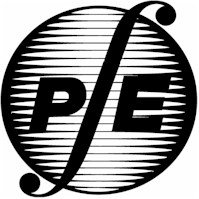Idaho Society of Professional Engineers
Friday Update - 06/24/05
WELCOME NEW MEMBERS!
Michelle Kalman/Moscow
UPCOMING EVENTS:
● July 7 - 9, 2005 - NSPE
2005 Annual Convention, Chicago, Illinois
● August 11-13, 2005 - ACEC
of Idaho Annual Meeting - Sun Valley, Idaho
● October 28, 2005 - PE and
PLS Examinations - Boise, Idaho
● October 29, 2005 FE (aka
EIT) Examinations - Boise, Idaho, Pocatello, Idaho, Moscow, Idaho

Do you realize that nearly everything around you that makes your life easier and
more fun, nearly everything that makes our economy go, has been created by an
engineer? So when you take a trip - either around your neck of the woods
or around the country - you'll find countless sights that help tell the
engineering story.....More
information
NSPE GOVERNMENT RELATIONS
The NSPE Government Relations effort targets both federal and state
legislative and regulatory issues, focusing on issues important to licensed
professional engineers. Primary issue areas include engineering licensure and
specialty certification, professional liability and tort reform, infrastructure,
construction job site safety, procurement of engineering services, professional
standards, engineering education and research, retirement income, volunteer
protection, competitiveness, the environment, and energy, among others.
Learn more

MATHCOUNTS PROBLEM OF THE WEEK
Can you solve this MATHCOUNTS problem? The answer will appear in next week's
edition of the Friday Update!
What Integer Am I?
Many students will have started or very soon will be starting summer breaks.
Here are some fun math riddles to keep you "thinking math" even during these
summer months! These problems are taken from the last four MATHCOUNTS School
Handbooks.
Choose a number. Triple that number. Add 200. Double the result. Subtract 100.
Divide by 4. Subtract 150% of the original number. I am the result no matter
what number you started with. What integer am I? For bonus… can you prove that I
will always be the result?
--------------------------------------------------------------------------------
A rule allows you to replace an integer n with another integer (a ´ b) provided
n = a + b, where a and b are positive integers. For example, 7 can be expressed
as 2 + 5 and can therefore be replaced with (2 ´ 5) = 10. This is only one of
three possible replacement values for 7. I am the greatest integer you can
obtain by starting with the number 5 and applying the rule four times
consecutively. What integer am I?
--------------------------------------------------------------------------------
The sum of my digits is 11. I am a value greater than 50 and less than 100. When
I am divided by 2, the result is a prime integer. What integer am I?
--------------------------------------------------------------------------------
I am a two-digit integer. My tens digit is odd, but my units digit is even. I am
greater than 65. I am a multiple of 9, but I am not a multiple of 5. What
integer am I?
Answer to last week's MATHCOUNTS problem:
The original face of the goal has an area of (4)(6) = 24 square feet. The new
dimensions of adding on 4 inches to the height and 8 inches to the width (or 1/3
foot to the height and 2/3 feet to the width) will result in an area of
approximately (4.333)(6.666) = 28.88 square feet. This is an increase of 4.88
square feet, which is (4.88) ¸ (24) = 20.3%.
--------------------------------------------------------------------------------
It is possible to figure out the area of a leg pad. The current area is (38)(12)
= 456 square inches while the proposed area would be (38)(11) = 418 square
inches. This is (418)/(456) = 11/12 of the original area. Notice that since the
length did not change, the percent change in area is equal to the percent change
in length. Since the new width is 11/12 of the original width, the new area is
also 11/12 of the original area.
--------------------------------------------------------------------------------
We are now increasing each of the dimensions of the goal area by 3 inches, or
0.25 feet, to a new size of 4.25 feet by 6.25 feet. This is an area of 26.5625
square feet. This is an increase of 26.5625 – 24 = 2.5625 square feet. One
square foot measures 12 inches by 12 inches or 144 square inches. Our increase
is then equal to (2.5625)(144) = 369 square inches. We now need to add a total
of 369 square inches to the area of the leg pads that are each 38 inches tall.
Each pad must gain 369 ¸ 2 = 184.5 square inches. By increasing the width of the
pad and not the height, it is as if we are attaching a rectangular region that
is 38 inches tall to the current pad. We need this region to have an area of
184.5 square inches. This means the width of the added rectangular region must
be 184.5 ¸ 38 = 4.9 inches on each leg pad.
If you want to see last week's problem again, click
http://www.mathcounts.org/webarticles/anmviewer.asp?a=680&z=104
Idaho Society of Professional Engineers
PO Box 170239
Boise, ID 83717-0239
208-426-0636
Fax: 208-426-0639
E-Mail: ispe@rmci.net
Web Site: www.Idahospe.org
 Idaho
Society of Professional Engineers
Idaho
Society of Professional Engineers